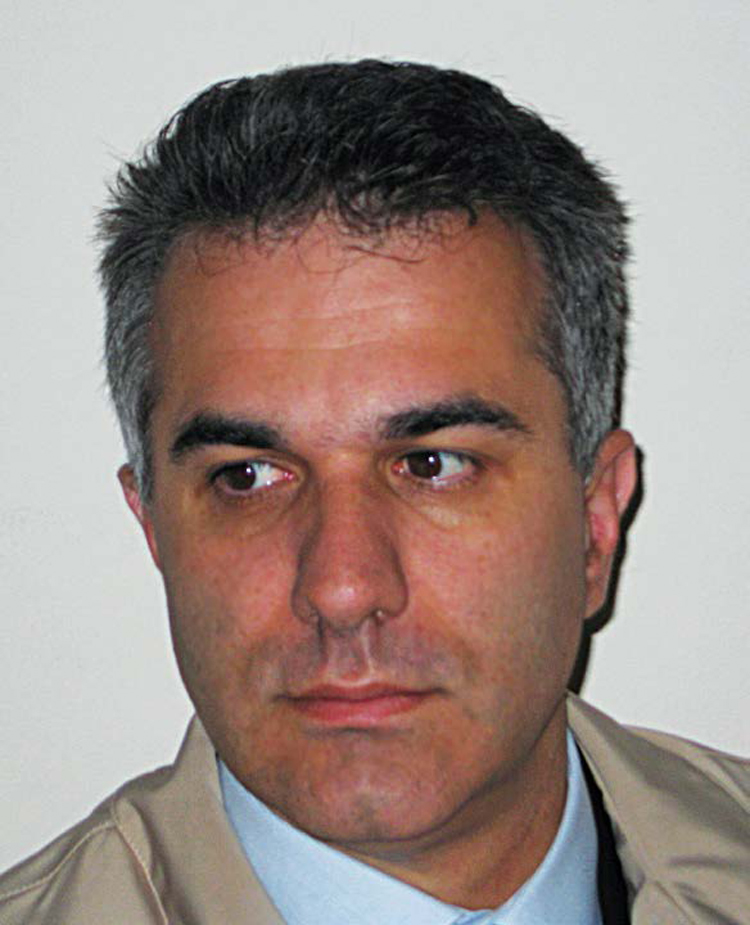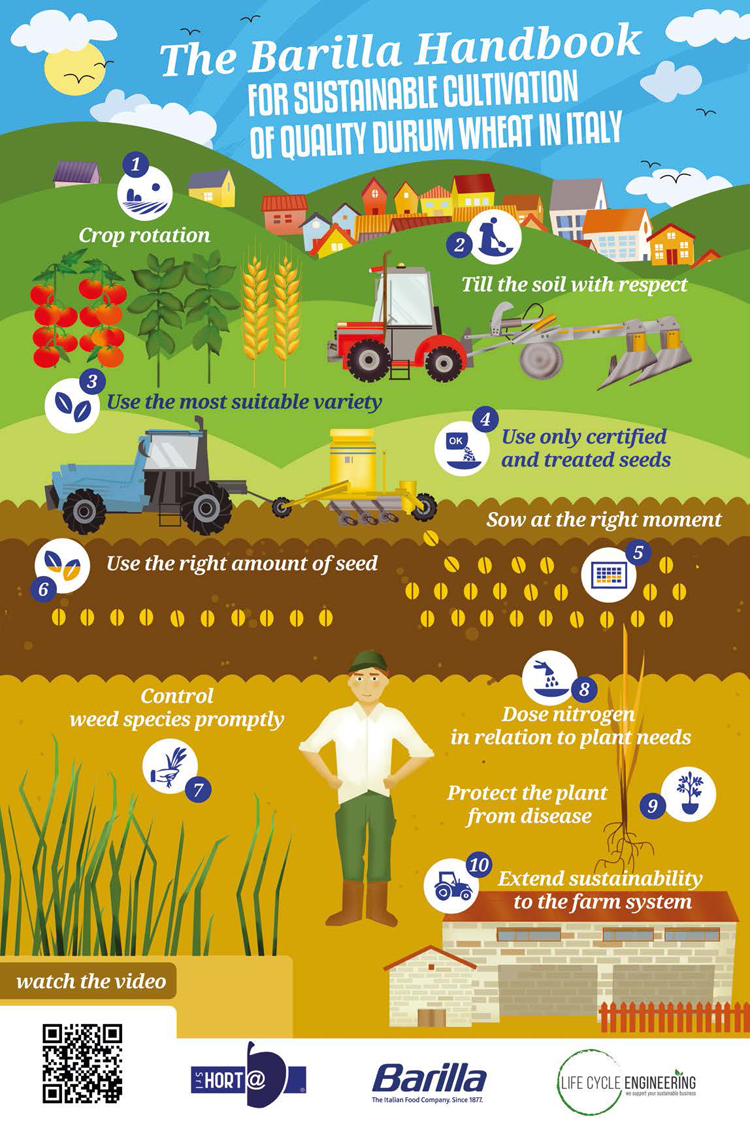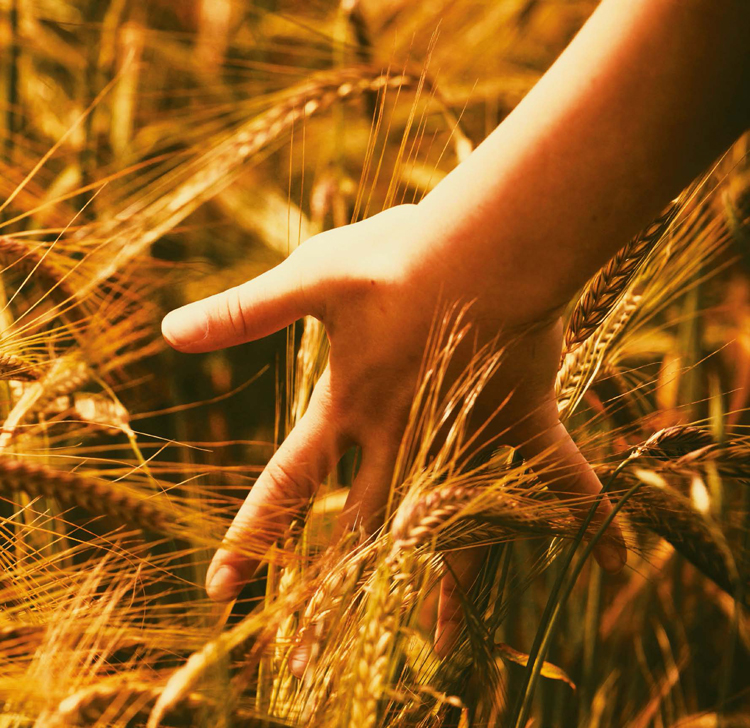 “On a global scale, our analysis systems show that farmland expansion has reached a point of no return”, these are the words used by Johan Rockström in the interview published in issue n. 2 of this magazine. The Swedish scientist has thus posed a tragic question, “Are we seriously considering the threats of the effects of climate change, which over the next years will bring more and more shocks to agricultural production?”
“On a global scale, our analysis systems show that farmland expansion has reached a point of no return”, these are the words used by Johan Rockström in the interview published in issue n. 2 of this magazine. The Swedish scientist has thus posed a tragic question, “Are we seriously considering the threats of the effects of climate change, which over the next years will bring more and more shocks to agricultural production?”
At the same time, current agricultural practices are one of the major causes of the environmental crisis and those more affected by it. Research into this phenomenon can only start with the more vulnerable part of the front – agrifood businesses – where the relation between economic activity and natural capital is direct, and its protection is a necessity.
Barilla, the company with Italy’s second-highest turnover, over the last years has embraced a sustainability project for the whole production chain, conceived to produce positive effects on the natural, social and economic capitals involved in its activities. During a meeting in our newsroom, Luca Ruini, company representative on these issues, told us about how the project was born and about its benefits. A model for supply chains other than durum wheat.
“The project of sustainable agriculture was born out of curiosity. I have been researching into the life cycle of food products for years, evaluating how the environmental impacts are distributed along supply chains. When I first carried out this analysis over ten years ago, I was amazed: I would have expected to find a heavier impact in the transport, production and packaging phases, but it turned out that the impacts were linked to the agricultural and cooking phases of pasta. Obviously, this did not hinder the activities on the other aspects, but it led me to try and understand how the upstream impacts before production, namely farming, could be reduced. So I asked the colleagues who dealt with the improvement of wheat quality to show me who I might contact to fully understand how to optimize the use of fertilizers in particular and of chemistry in general. I was referred to the people who follow all our experimental fields in order to improve cultivation practices.
The interesting thing that emerged from it was the availability of a bulk of data and historical analyses that could be used for a comparative analysis amongst different cultivation modalities. It was highlighted how a correct rotation amongst various species improving soil fertility (such as leguminous plants) and species absorbing nutrients allowed an optimal use of fertilizers, by reducing the quantities used, and of chemistry in general. I then asked them to carry out an analysis on rotations as they were done at the time, in the various areas from where our company buys wheat, in the north, centre and south of Italy, comparing the data with those that would be achieved with more efficient, alternative and localized practices, in order to improve the use of fertilizers and phytosanitary products in general. And I also asked them to carry out an analysis with a mix of environmental (carbon footprint, water consumption...) and ‘classic’ agronomic indicators (efficiency, costs, risk reduction). The result came as a surprise: all the alternative correct rotation solutions suggested achieved some advantages in all indicators: they had a lesser environmental impact, occasionally increased the yield while reducing costs besides lowering the risk of some diseases. I did my calculations three times, because before reporting back to the company such a big result, one needs to be absolutely sure...
I reckon this is a textbook example of sustainability: by changing point of view, some old practices have been revived (correct crop rotation) and actually, when chemical fertilizers did not exist, either you applied a correct crop rotation or soil depletion occurred, weeds and diseases took over and farming was no longer possible.”
Based on the evidence emerged from the analysis, how did you then implement the project?
“Actually, the second step was quite critical: I am an electronic engineer and if I go and talk to farmers, they just don’t believe me. So an interim step to test the model in practice was needed. We chose some farms in the north, centre and south of Italy that work with us to improve the quality of wheat farming and we tried to compare traditional farming systems (often in continuous cropping) with crop rotation. On top of that, a Decision Support System (DSS) was set up, allowing farmers to adopt specific strategies. The idea was to use models to predict the onset of diseases and to assess the best times and doses to use fertilizers, according to weather forecasts. By uploading data onto a web platform – about the various types of soil, which variety was sown that particular year and which one the previous one – and by associating the data to a weather forecast station located near the field, indications on what and when to take action can be obtained, so that farming techniques can be optimized.
Often, in the past, farmers carried out chemical treatments (fertilization, weeding and fungicides) according to a calendar, without taking into consideration the state of crops and real infestation conditions (diseases or weeds).
With this new Decision Support System, the indication is to treat only if and when needed, i.e. when the weather can cause the onset of diseases. Otherwise, no action is required.”
What kind of results did you achieve?
“During three consecutive years, from the experimental fields, we got the exact confirmation of our theoretical results and from there we drew up a set of rules, which we regarded as our basic tool to go around and tell farmers how we thought it was the best way for them to farm in a more sustainable and efficient way. Moreover, we started to expand the test basis so that we could gain more confirmations and involve more farmers, until last year when we left the experimentation phase and harvested 80,000 tonnes, almost one third of the quantity we buy every year.
Such good result has been possible thanks to the fact that we have drawn up farming contract with our suppliers for over fifteen years.”

Could you expand on that?
“Both to guarantee us quality (in order to produce pasta wheat must have certain qualitative characteristics, above all with regard to protein content) and to secure us the necessary amount to satisfy our high production volume, we drew up farming contract with the producers’ organizations. Thanks to our established connections, we made DSS available for free and the abidance to a set of rules for the production of Quality Durum Wheat, on top of the use of a very high quality variety. This combination of factors led us to a production of 80,000 tonnes of wheat, which we know who farmed them and where. Behind this Decision Support System is the work carried out by the spin off Horta, from the University of Piacenza offering farmers simple tools to read that have behind them a very high level of complexity and therefore an important know-how. As a result (and here I am referring to the effects of human and social capital), a series of competences have been brought towards the agricultural world, enabling to carry out farming practices in a more sustainable and correct way.”
So it was a well-structured strategy, integrating research, use of pre-existing tools, definition of a set of rules and transfer of competences. Did this experience occur only in Italy or also elsewhere?
“We started off in Italy, because obviously in Italy the “catchment area” for durum wheat is larger, but we didn’t stop there. We are actually expanding the use of these instruments to Greece and Turkey where we are noticing significant changes. Instead in France – where the agricultural world is already more organized, competences are there, farms are bigger, important farming support is there – we found who had already applied these practices in a structured way for a long time. There it was just a matter of singling and working out what the impacts for the single productions were.
We are also developing a project for the United States, and the interesting thing is that when I first did my calculations about the environmental impacts of durum wheat, I got a phone call from Canada where they claimed that my figures were wrong and they explained why. What happened? There they had also adopted the rotation method between lentils and peas because already thirty years previously an association called Pulse Canada had been created, with the aim of teaching farmers how to adopt cereal-legume rotation. Canada is an exporting country and in order to be competitive on the European market it was necessary for it to reduce the use of fertilizers. In this way, starting from a criterion of pure efficiency, they also decreased environmental impacts. In the last thirty years, by adopting this kind of farming practices, they reduced their impact and consumption by 30%. And their results were the same that we found. Since we started reporting the results achieved applying correct crop rotation we found up to 30% reduction. so this a very good result that means 400 kg of CO2 equivalent less per tonne of durum wheat. So, by only doing what one is supposed to do, when it is necessary to do it according to microclimatic conditions, the environmental impact and costs are reduced, yields are improved and the risk of diseases is lowered, just because things are done as and when needed.”
An operating procedure that challenges the increasing standardization process experienced by agriculture over the last fifty years.
“Yes, in agriculture sustainability means being able to adapt to the context: when the context changes, the solution also changes. We can have the same analysis model but with different solutions.
If the geographical area where I cultivate changes, the type of rotation I need also changes because I must combine the characteristics of the soil, climatic conditions and raw materials required locally. An example: in Emilia Romagna, Barilla buys tomatoes, basil and durum wheat, so it can propose farmers to rotate these three crops and then it is Barilla itself that buys these crops directly from them. Easy, isn’t it?”
What kind of results have been achieved in therms of valorization of a common key asset such as soil?
“The adopted cultivation method protects the quality of the soil because I decide how much soil to use, if and how much to plough, what and how to sow... The set of rules that we propose contains a series of recommendations applied according to the context and the type of crop cultivated. This has a very different impact on soil quality. By correctly rotating, for example, I can achieve a balance enabling me to reduce the use of fertilizers.”
So, by intervening on a vast range of what we call somewhat paradoxically “externalities”...
“In general, nowadays, there is less care for the environment. So we have tried to understand if by promoting a certain model of agriculture positive impacts can be achieved in this respect, above all if applied to “disadvantaged” areas where I would not normally go for a series of reasons, first of all economic ones. We were interested in ascertaining what kind of benefit it could offer to communities and how it could be exploited. For instance, there are very few studies trying to quantify the damage caused by land abandon. Basically, the cost of not doing. And let me be clear, we do not do it out of philanthropy but understand if and how some practices should be supported to guarantee environmental protection. An assessment of costs and benefits should be carried out because there is not one yet.”
So have you tried using this kind of procedures on marginal or disadvantaged areas?
“Not yet. We are thinking of experimenting in some areas, especially in Southern Italy.
In Southern Italy, in some cases landowners either do not work the land or give it to contractors whose only interest is to sow and harvest. Not to protect soil. Wheat is very easy to grow so in some areas suitable for durum wheat cultivation, the soil is overexploited and the environment neglected.
Again, this has led us to understand that a change of perspective is needed: here the problem is not in the relationship between Barilla and farmers to guarantee wheat of a certain quality, but it is how to be able to optimize that specific soil from an economic and environmental point of view. The point of view is that of the soil. So I had a little chat with my colleagues. We sign contracts for the cultivation of durum wheat but then we also buy sugar, tomatoes, basil, often in the same areas, form the same farmers, from the same cooperatives. What I asked them was: would it be possible to sit around a table with different actors, that is with farmers cultivating tomatoes and sugar beets in order to understand if we could propose rotations of these crops able to perfectly complement each other from the soil’s nutritional point of view? Nothing of this kind had been tried before. Today we managed to sign four agreements enabling farmers to carry out a correct soil planning. It is a completely different way of interacting, it puts the soil at the centre, the natural capital, that is the common asset. In a year and a half, we managed to sign agreements that nobody had ever thought. Because the point of view was different.”

Changing the point of view has enabled you to intervene simultaneously and effectively both on the natural and human capital, on these people’s involvement and on their supply chain awareness. From this point of view, how would you describe the results achieved so far?
“On the one hand, I am surprised because it is interesting to see how effectively a sustainable approach offers you a different perspective on a problem, leading obviously to different solutions combining and optimizing several aspects: the natural capital and economic aspects because farmers reduce costs and thus benefitting even at business level, because they produce more and better quality durum wheat and their production is more constant. In this way through farming contract, I can make sure that I get the wheat I need. A series of cascading benefits. The other positive aspect is that it introduces an element of planning that in recent years, both at national and local level, has been missing. It is not easy to put across the message that acting in a certain way we can achieve a general benefit for all. It is necessary for different interest holders to recognize that there is a common interest and that its pursuit by all can lead to economic advantages. Adopting the soil point of view is not very common, a big role is played by the market and its dynamics that are not only linked to production costs but also to how much rain falls in Canada or to the weather in Australia. But this is a necessary perspective change that leads companies to question the way they interact with the supply chain. Not any easy thing to do because we are dealing with complex systems involving many actors. But in my opinion it is a must.”
Has it been well received?
“Of course. And this year we even expect a further increase. On one occasion, we included in these projects a farmer linked to Coldiretti (Italy’s largest agricultural professional organization) and he had to cultivate just a plot of land to start with. Then, when he discovered he could save money he used the same method on all his land and he started talking about it, and that is exactly what we wanted. At the beginning, we struggled to convince him, but when he understood how it worked and the expected results... and then the results came... it is perfect.”
What about the effects in terms of improvement of product quality?
“There is obviously an increase in the quality of the product because, since one of the main characteristics is the quantity of protein, and the quantity of protein in wheat is strictly linked to the quantity of nutrients in the soil. Moreover, historically Barilla has taken part and been involved in improving the quality of wheat varieties working on cultivation methods. In recent years, we have introduced new high quality wheat varieties suitable for pasta-making. In particular, we selected more than one variety with the same qualitative characteristics of the best American wheat varieties, but that were suitable for Northern and Central Italy’s environment.
Introducing in Italy the cultivation of these varieties, with a production of 40,000 tonnes – previously grown in irrigated areas in the USA – has meant saving 35 million m3 of water per year. In the USA, it was irrigated, in Italy it is not. In its factories around the globe, Barilla uses 2-3 million m3 per year, this gives you an idea of the scale of the water savings achieved.”
One last question, a key question for a company, what about the cost effectiveness of this kind of strategy?
“The aspect of this operation that surprised me was that the more we reduced the environment impact the more we reduced production costs. As we mentioned before: farmers spend less and the company has the quality and the quantity of wheat it needs. An important advantage: thanks to farming contract I can avoid supply scarcity and price increases. In this way last year, we satisfied most of our needs. Supply security is a crucial aspect. Otherwise, we would have to buy wheat around the world, running the risk of having to pay a higher price than the wheat that we get farmers to grow for us. And in Italy we try to source it locally, near our grinding plants. Lower costs, lower environmental impact. The benefit is self-evident.”
Info



